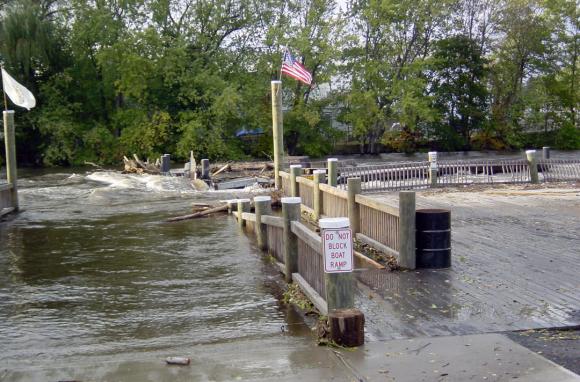CENTRAL FALLS, R.I. — A unique partnership is taking root between Brown University and Rhode Island’s tiniest city, Central Falls.
A group of undergraduate students taught by environmental studies professor Timmons Roberts is helping the financially distressed city update its master plan to respond to natural disasters. An updated master plan could trigger federal and state funds that planners want to make much-needed improvements.
Central Falls is welcoming the assistance. Its planning and economic development coordinator, Brown graduate Stephen Larrick, has never worked on a hazard-mitigation plan. The acting fire chief, John Garvey, the only dayside person staffing a fire department that serves more than 19,000 residents, doesn’t have the time to revise the document, last updated nearly seven years ago. The city must update its hazard-mitigation plan to qualify for federal grants that could be used to reduce the risk in flood-prone areas.
“You know, the city of Central Falls is short-handed, a little under the weather, so it’s great that we’re getting help from so many places, including Brown,” said Garvey, a lifelong resident, in an interview at city hall.
About 30 students in Roberts’s class, “ENVS 1920– Analysis and Resolution of Environmental Problems,” have broken into smaller groups to help city planners update the 48-page plan. Last fall, graduate students in another class taught by Roberts reviewed the 2005 hazard-mitigation plan and detailed a series of recommendations to best update it and to make it more comprehensive.
“The graduate students working on the plan were older than me, that’s probably for sure,” the 22-year-old Larrick said.
Roberts’s current class is building on their peers’ work, with each team expected to complete its designated section by later next month. The subjects they are examining include past weather, climate modeling, at-risk populations, food access and security, property, and public health and safety.
“I keep telling them it’s not a cookbook assignment. This is original stuff that’s never been done before,” said Roberts, who directs the University’s Center for Environmental Studies.
“It’s definitely going to be useful,” said Larrick, who interned in the city’s planning department last summer before being brought on full time. “They are coming up with a full plan, a real, acting piece of policy, not something that’s going to sit on a shelf.”
The students are expected to go into the community as part of their research, Roberts said. Many have done so already, working with community groups such as Progreso Latino and Fuerza Laboral, he added.
“Our role is to grease the wheels” and let them go, added Larrick, an urban studies concentrator at Brown who graduated last May. “We’re not going to be sitting down and writing (the report) for them.”
There is a lot to learn. Central Falls is comprised mostly of residences, packed in an urban area a little more than a square mile. The city, hilly in many places, is bounded to the north and east by the flood-prone Blackstone River, which was once called “the hardest working river in America” for its role in powering the nascent Industrial Revolution. Pockets of heavy industry border the river, presenting dangers ranging from chemical spills to washed-out manufacturing facilities. During the heavy rains that fell on Rhode Island in spring 2010, Central Falls sent school buses into flooded areas to evacuate residents. The city petitioned, and received, disaster relief from flooding from the Blackstone after Hurricane Irene swept through last summer.
“We have ideas and things that need to be fixed,” Garvey said.

